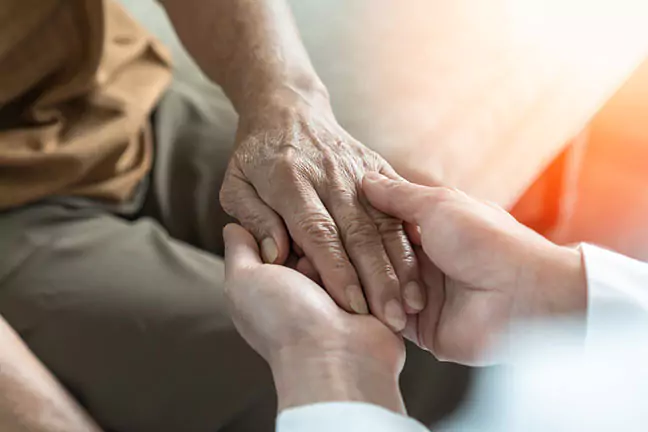Are you caring for a loved one and wondering if you can receive financial support for your efforts?
With many families and friends stepping up as primary caregivers for relatives with physical disabilities, mental illness, or age-related conditions, understanding the financial support available is crucial.
Medicaid, a key provider of support for caregivers, may offer you compensation for the essential care you provide.
This blog will guide you through how Medicaid can help compensate family members and friends who provide caregiving services, ensuring that both caregivers and recipients receive the support they need.
Medicaid's Role in Caregiving
Medicaid is not just a serious health care insurance program—it’s a lifeline for millions who undertake the rewarding yet challenging role of caregiving. Whether you’re assisting someone with daily living activities, managing their medication, or providing emotional support, Medicaid recognizes your invaluable service. Unlike private insurance which typically covers medical care, Medicaid extends its benefits to cover personal care services, often allowing family members to be financially compensated.
Under programs like Home and Community-Based Services (HCBS) and state-specific Medicaid plans, you can receive payment for caregiving. These initiatives are designed to prevent unnecessary nursing home placement by supporting care in the home setting and fostering a comfortable environment for those with developmental disabilities or chronic health conditions.
What’s more, Medicaid eligibility for these programs includes a broad range of caregivers—whether you’re a family member or a close friend dedicated to aiding in home care for a loved one, there are opportunities to receive support.
Who Can Become a Paid Caregiver?
If you’re providing care for a loved one and wondering if you can get compensated, knowing who qualifies as a paid caregiver under Medicaid is essential. Generally, Medicaid programs allow family members, including adult children, spouses in some states, and even friends to become paid caregivers. This flexibility means that the loving care you already provide could also help you financially.
Each state has specific guidelines that define who can be a caregiver and how they can be compensated. For instance, while many states permit adult children to receive payment for caregiving, others have started to include spouses as eligible caregivers.
It’s important to understand your state’s rules for managed care, which often require that caregivers meet certain eligibility requirements or obtain certification. Your role might involve assisting with personal care tasks, medication management, or general daily living activities—each of which is critically valued by Medicaid programs.

Types of Medicaid Programs Supporting Caregivers
Navigating the different Medicaid programs that support caregivers can seem daunting, but here’s a breakdown to make it clearer. Medicaid State Plans, often referred to as Regular Medicaid, and Home and Community Based Services (HCBS) Waivers are the primary programs through which you can become a paid caregiver.
Medicaid State Plans
The state Medicaid program plans typically offer personal care services, and many allow you to self-direct the care. This means you, as a caregiver, can be hired by your family member to provide necessary care, and in turn, receive payment directly from Medicaid.
HCBS Waivers
HCBS Waivers are designed to prevent institutional care by allowing recipients to receive care in their homes or communities. These waivers might cover a range of services including case management, adult day care, respite care, and more. As a caregiver under an HCBS waiver, you not only provide essential care but also ensure your loved one can stay in the comfort of their home.
How Much Does Medicaid Pay for a Caregiver?
The amount Medicaid pays you as a caregiver can vary significantly based on where you live and the specific needs of the person you’re caring for. Generally, payment rates are influenced by the average wage for home care aides in your region and the level of care your loved one requires.
For example, if the typical home care aide wage in your area is $15 per hour, Medicaid might pay you a comparable rate, adjusted according to the complexity and demands of the caregiving tasks you perform. These rates are assessed and updated periodically to reflect changes in the cost of living and wage rates in different areas.
Keep in mind that while Medicaid provides financial assistance and compensation, it often does not equate to a full-time income. It’s intended to support your caregiving efforts, recognizing the vital role you play in your loved one’s life. Payments are calculated based on an assessment of the recipient’s needs, which is conducted by your local Medicaid office. They will consider how many hours of care are needed per week and the type of care required, which then determines how much you will be compensated.
Medicaid Eligibility for Caregivers (Home Health Aides)
To become a paid caregiver through Medicaid, both you and the person you care for must meet specific eligibility criteria, which vary by state. These requirements typically involve assessments of both financial and functional needs.
Financially, the person receiving care must qualify for Medicaid based on income and asset limits that align with state-specific thresholds. Functionally, they need to demonstrate a need for personal care or for home health care services, which could be due to a variety of conditions such as physical disabilities, intellectual disabilities, or age-related impairments.
For caregivers, some states may require that you undergo training or certification to ensure quality care is provided. This might include CPR certification or specialized training in managing specific health conditions like Alzheimer’s or other forms of dementia.
It’s essential to check with your local Medicaid office to understand what certifications or qualifications you need to meet to be eligible for payment.
How to Apply to Become a Paid Medicaid Caregiver
Applying to become a paid caregiver involves several steps. First, you need to ensure that the person you will be caring for is eligible for Medicaid and that their care needs align with the services Medicaid is willing to cover. You can start this process by contacting your state’s Medicaid office or visiting their website to fill out an application. During this process, you’ll need to gather and submit documentation that proves income levels, medical conditions, and other relevant information.
Once the Medicaid eligibility is confirmed, you can explore specific programs that allow for paid caregiving. This might involve additional applications or enrollment in programs like HCBS Waivers or State Plan Personal Care. Often, the care recipient will have a case manager assigned to help coordinate services and guide both of you through the specifics of setting up a caregiving arrangement that Medicaid will compensate.
Third Party Companies
You can also check your eligibility to become a caregiver through caregiving training companies that can also find employment opportunities

Medicaid Beneficiaries’ Eligibility for Lifeline Program
As a Medicaid recipient, you or the person you care for might also qualify for the Lifeline program, which provides reduced-cost or free cell phone and data service. This program, supported by companies like EASY Wireless, is designed to ensure that individuals receiving government benefits such as Medicaid can maintain essential communication services. For caregivers, this connectivity is crucial for coordinating with healthcare providers, managing emergencies, and maintaining consistent communication lines with family members and other caregivers.
FREE Lifeline Cell Phone Service with EASY Wireless
To apply for the Lifeline program simply come in to one of our retail stores and a customer service agent can assist you through the enrollment process.
You can also enroll online and we’ll ship you a FREE SIM Card Kit for your phone.
Ready to Become a Caregiver?
Ready to take the next step towards becoming a paid caregiver and accessing beneficial programs like Lifeline? Here’s what you can do:
Contact your local Medicaid office to discuss eligibility and application processes for becoming a paid caregiver.
Apply for the Lifeline program through providers like EASY Wireless to secure essential communication services.
Take action today to secure the support you deserve—both financially and in your caregiving efforts. Engage with these programs to not only enhance your capacity to provide care but also to improve the quality of life for yourself and your loved one.


